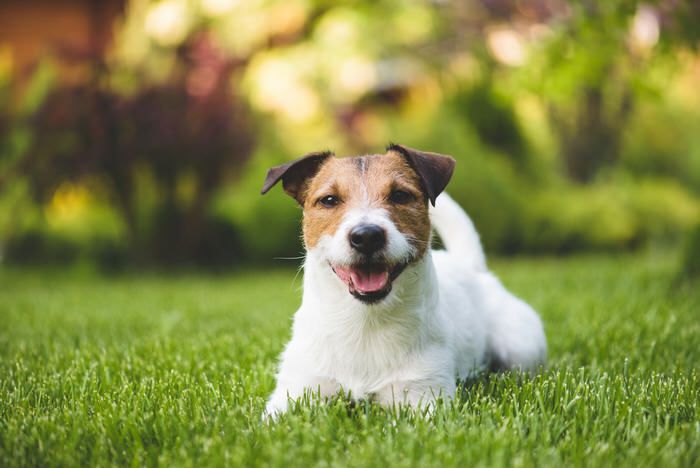
If you have dogs, you understand the challenges of keeping your lawn lush and green. Lawn burn is a common issue for many dog owners, and occurs when your dog’s urine damages the lawn due to an alkaline pH, concentrated urine, and nitrogen load.
Urine pH and Nitrogen Load
Ideally, dogs should have a slightly acidic urine pH of between 6 and 6.5. If your dog’s urine pH is above 7, the higher pH will burn your lawn and could lead to struvite stones, bladder stones caused by alkaline urine. To check your pet’s urine pH at home, you can purchase pH strips and collect a urine sample from your dog in the morning. A dog’s urine pH can be reduced with a low-carb, grain-free diet.
Dogs on a very high protein diet can also produce urine that causes lawn burn. When protein is broken down, nitrogen is excreted. Higher amounts of protein lead to increased nitrogen, and a greater chance of lawn burn. If your lawn is heavily fertilized, it may be receiving near maximum levels of nitrogen already, and the additional amount of nitrogen in your dog’s urine could damage the grass.
Hydrate Your Dog
Keep your pet well hydrated to help decrease urine concentration. Place water containers in several locations around your home or yard, and consider adding water to your dog’s dry food or feeding your dog wet food to promote good water consumption.
Create a Potty Area
You can also train your dog to urinate in a different location, such as a designated outdoor potty area filled with gravel or mulch. This is especially important in the morning, when the urine is usually most concentrated. A pheromone-treated pee post can promote urination in a specific area of your yard, or leash walk your dog to a new area, and offer treats to reward the desired behavior. Routinely walking your furry friend is a good way to reduce this issue, and a great source of exercise for both of you.
Choose a Hearty Grass
To keep your lawn looking nice, it’s important to choose a hearty grass. Tall Fescue grass is a stronger grass, and better at handling dog urine. Fescue grass is also stronger to withstand foot traffic from canines, and drought resistant so it needs less water. If you have problem spots in your lawn, you can add in the perennial form of Ryegrass. For high foot traffic, consider Kentucky bluegrass or Bermuda grass.
Protect Your Lawn
Water your lawn frequently to help dilute the urine, and apply gypsum to burned or yellow spots to improve the color and health of your lawn. You can also make your own product to spray on your lawn to help with spots: Combine one can of beer, one can of regular soda, and one cup of ammonia in a 20 gallon hose-end sprayer. Remove any dead or dying grass, and then apply the mixture every other week until the lawn color returns to normal.
You’ll also want to rule out other problems that can lead to brown spots. Keep your lawn mower blade sharp, and use a lawn fungus control product to protect your lawn from brown grass fungus. Overfeeding your lawn with fertilizer can cause brown patches, and lawn pests like Japanese beetles and grubs can cause discoloration—both can be treated with lawn insect control products. If the neighborhood dogs are the source of the problem, have your yard fenced and consider installing a motion activated sprinkler to prevent other dogs from eliminating on your lawn.
With these tips to treat and prevent lawn burn, your furry friends will stay happy and your lawn will stay green and lush all year.


